Wednesday, January 23, 2008, 06:38 PM
- Models
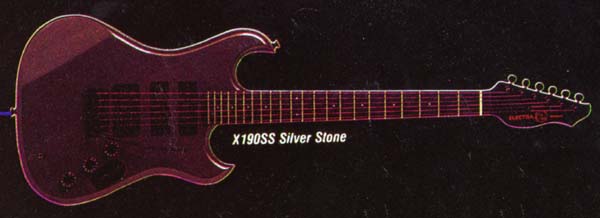
Bolt neck double cutaway with maple body, maple neck, rosewood fingerboard, black hardware, graphite nut and Bendmaster FT two-post bridge, locking nut, one humbuckers, two single-coil pickups with three pull-switch knobs (V-T-T) for coil tap, fat (center on) and phase; and 3-way selector switch.
X190SS (H-S-S)(Silverstone= metallic bronze)
X190BL (H-S-S)(Blue Burst)
X190BR (H-S-S)(brown)
X190JB (H-S-S)(Jet Black)
The X190 was the answer to all those (and there must have been at least a few) who argued that the X185 and X189 were too complicated and unfamiliar what with their H-S-H and all those knobs. The X190 offered much of the same range in what today we would call a superstrat configuration, which made all kinds of sense in a day when playing lead guitar meant all kinds of shredding.
The X190 essentially replaced the X175 by adding that additional humbucker to the X175ís S-S-S. Both share the non-strat Electra Phoenix 3-way switch for bridge and neck pickup and fat switch to turn the middle pickup on.
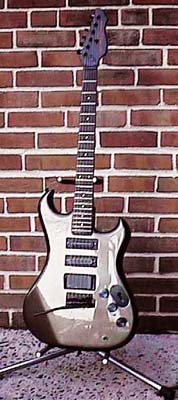
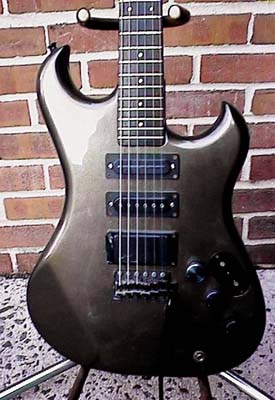
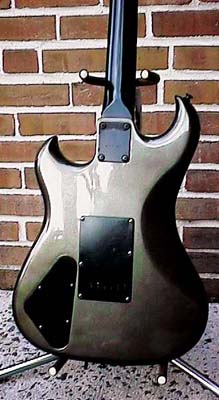
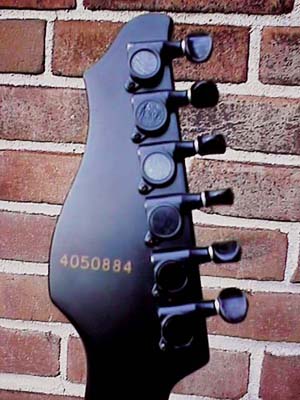
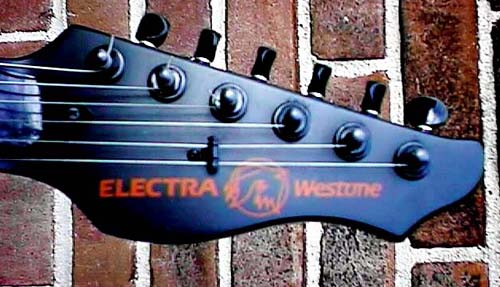
The above pictures were identified in the old Electra site as an X180, but no mention of an X180 is in any pricelist, and it is believed to actually be an X190. Note the original pickups have been replaced in this example.
permalink
| related link
Wednesday, January 23, 2008, 06:30 PM
- Models
Bolt neck double cutaway with maple body, maple neck, rosewood fingerboard, black hardware, graphite nut and Bendmaster two-post bridge, two humbuckers, one single-coil pickup with three pull-switch knobs (V-T-T) for coil tap, fat (center on) and phase; and 3-way selector switch.
X189RD (H-S-H)(red)
X189RB (H-S-H)(red burst)
X189PB (H-S-H)(pearl burst)
X189JB (H-S-H)(jet black)
The X189 was an upgraded X185, with a two-post tremolo bridge to replace the six-screw vintage tek-lok bridge. EVH had gotten everybody playing with their wang bars, and unhappy because surprise, the guitar would go out of tune.
The way to make deep bends stay in tune properly was to set up a full floating bridge, and that was much easier to do with a two-post bridge, which also allowed greater range. The Bendmaster was an excellent two-post bridge with a stamped plate and cast saddles. Low in profile, it could be equally easily adjusted flush against the guitar body as a good hardtail bridge.
Wednesday, January 23, 2008, 06:28 PM
- Models
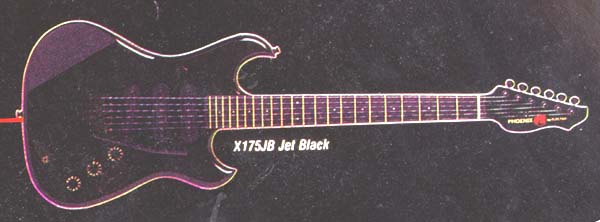
Bolt neck double cutaway with maple body, maple neck, rosewood fingerboard, black hardware, graphite nut and tekglide (vintage style) bridge, three single-coil pickups with three knobs (V-T-T) and 3-way selector knife switch.
The X175 was a replacement for the X140. By 1983 it was hard to sell a guitar without a tremolo bridge, and the X175 added that plus a strat-style 3-way knife switch instead of the Gibson-style 3-way of other models. Clearly this model was intended to be familiar to someone used to a Fender, and indeed it is the most strat-like of the line.
X175JB (S-S-S)(jet black)
Wednesday, January 23, 2008, 06:25 PM
- Models
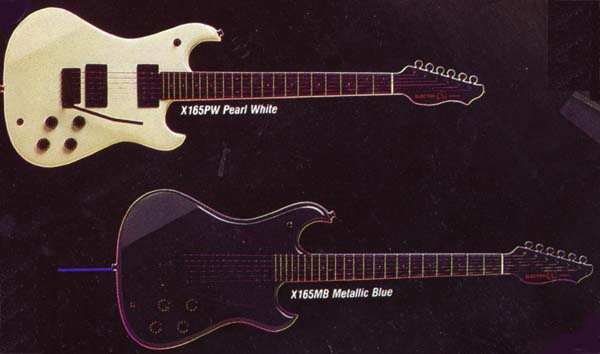
Bolt neck double cutaway with maple body, maple neck, rosewood fingerboard, black hardware, graphite nut and tekglide (vintage style) bridge, two humbuckers with four knobs (V-V-T-T) with pull-switches for coil tap and phase reverse.
X165PW (H-H)(pearl white)
X165MB (H-H)(metallic blue)
X165GR (H-H)(metallic olive green)
The X165 appeared in 1983 to replace the X130 with updated colors and a tremolo bridge. EVH was just appearing, and suddenly everyone wanted a guitar with a whammy bar, you couldnít sell one without one, even though most people couldnít do that much with it. The X165 was the first appearance of black hardware which became mostly standard throughout the line- very 80ís.
Wednesday, January 23, 2008, 06:22 PM
- Models
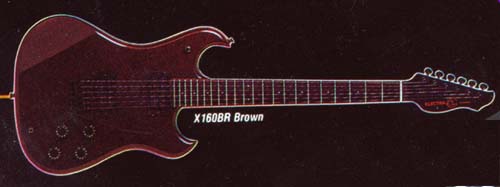
Bolt neck double cutaway with maple body, maple neck, rosewood fingerboard, black painted hardware, graphite nut and Tekglide (vintage style) bridge, two humbuckers with four knobs (V-V-T-T) with pull-switches for coil tap and phase reverse, active EQ.
X160BR (H-H, active EQ)(metallic brown)
The X160 is one of the rarer Electra Phoenixes, appearing only in 1983 at the end of the appearance of the X150 with which it shared active EQ. For a guitar with premium electronics, its brown metalflake finish is strangely subdued, one can only imagine it was intended for perhaps a jazz audience.
Was active EQ really a useful feature? Gibson had asked the same question with the Artist series, which it doomed by associating with the strange and unpopular RD series. It can be useful for some players- certainly a preamp is one way of shaping distortion. But for distortion you want to boost midtones, not high and low. Active EQ tends to be most useful for players who use clean tones, especially those who, like electric acoustic players, tend to be plugging into weird PA systems not designed for guitar, or in weird room situations.
Today we have to remember that making effect devices easily available to consumers was a fairly new innovation. There were some hairy fuzz pedals, and wahs, and giants like Hendrix and Page had them, but there was not the plethora of devices we have today. So having active EQ onboard, like the MPC guitars which carried onboard effects, was a really interesting experimental way to apply the electronics. It was a different direction than we see today, one which certainly put controls at the usersí fingertips. The question remains whether the average player really wants that much control. For the specialist, however, it offers premium performance.
Back Next






